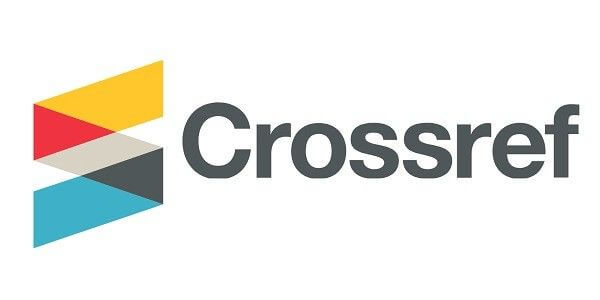Palawan Peacock Pheasant (Polyplectron Napoleonis) Species Distribution Modeling: A Review of the Impact of Typhoon Rai/Odette on the Diversity and Distribution of an Endemic Bird Species
Keywords:
MaxEnt, species distribution modeling, Palawan Peacock Pheasant, endemic speciesAbstract
This study quantified the habitat requirements and, consequently, described the remaining suitable habitats through species distribution modeling of Polyplectron napoleonis within Cleopatra’s Needle Forest Reserve and Puerto Princesa Subterranean River National Park after the onslaught of Typhoon Odette in the Palawan region. This was accomplished using MaxEnt software, a statistical machine-learning algorithm that creates niche models with presence-only (PO) data and surrounding environmental variables (Dudik et al., 2007; Merow et al., 2013). Previous studies have identified precipitation, elevation, and land cover as the top environmental variables influencing tandikan habitat suitability, as revealed by their percent contributions. There were earlier claims of the noticeable movement of habitat-suitable areas to the fringes and beyond Cleopatra's Needle Forest Reserve. The migration seems to be going towards highland forests. Two factors could be behind this migration: the tandikan are responding to climate change or avoiding human disturbance. As this species is known to have a high tolerance for temperature change, the latter could be the more plausible factor. For 2022, post-Odette, MaxEnt analysis revealed a shift of percent contributions with elevation and land cover classification outranking aspect and slope. Environmental layers were limited to four, as these were the only currently available data. This shift in percent contributions could be linked to the direct damage to forests brought by the Typhoon in December of 2021. The land cover map generated for this year has shown large areas of forests that were converted into non-forests. Conservation efforts, therefore, for the tandikan, a forest species, should be recalibrated in response to this current development. Further, measures to mitigate the impact of solid typhoons on forests should be reviewed and evaluated.
References
Acero, L. (2020). Management by objectives: The Puerto Princesa Underground River, Palawan Philippines. IOP Conference Series Earth and Environmental Science, 424(1), 012008. https://doi.org/10.1088/1755-1315/424/1/012008 DOI: https://doi.org/10.1088/1755-1315/424/1/012008
Badino, G., De Vivo, A., Forti, P., & Piccini, L. (2018). The Puerto Princesa Underground River (Palawan, Philippines): Some peculiar features of a tropical, high-energy coastal karst system. Geological Society London Special Publications, 466(1), 155–170. https://doi.org/10.1144/sp466.22 DOI: https://doi.org/10.1144/SP466.22
BirdLife International (2003). Palawan Peacock-pheasant. https://web.archive.org/web/20070317170718/http://www.rdb.or.id/view_html.php?id=222&op=polyemph
Polyplectron napoleonis: BirdLife International. (2018). [Dataset]. In IUCN Red List of Threatened Species.
https://doi.org/10.2305/iucn.uk.2018-2.rlts.t22679398a132051467.en
BirdLife International (2020). IUCN Red List for birds. http://www.birdlife.org
Blach‐Overgaard, A., Svenning, J., Dransfield, J., Greve, M., & Balslev, H. (2010). Determinants of palm species distributions across Africa: The relative roles of climate, non‐climatic environmental factors, and spatial constraints. Ecography, 33(2), 380–391. DOI: https://doi.org/10.1111/j.1600-0587.2010.06273.x
https://doi.org/10.1111/j.1600-0587.2010.06273.x
Bush, K. L., & Strobeck, C. (2003). Phylogenetic relationships of the Phasianidae reveals possible Non-Pheasant taxa. Journal of Heredity, 94(6), 472–489. https://doi.org/10.1093/jhered/esg092 DOI: https://doi.org/10.1093/jhered/esg092
Britannica, T. Editors of Encyclopaedia (2023). sexual dimorphism. Encyclopedia Britannica. https://www.britannica.com/science/sexual-dimorphism
Caleda, M.R. (1991). Population ecology of the Palawan Peacock Pheasant (Polyplectron emphanum) at Saint Paul Subterranean River National Park, Unpublished, MSc Thesis.
Center for Conservation Innovation Philippines Incorporated (n.d.) https://conservation-innovations.org/about-us/
Collar, N. J., Crosby, M. J., & Stattersfield, A. J. (1996). Birds to Watch 2: The World List of Threatened Birds. Colonial Waterbirds, 19(1), 156. https://doi.org/10.2307/1521829 DOI: https://doi.org/10.2307/1521829
Coym, M. (2017). Polylpectron Napoleonis Fact Sheet. Avian Scientific Advisory Group. http://aviansag.org/Fact_Sheets/Galliformes/PP_Pheasant.pdf.
Dickinson, E. (2001). The correct scientific name of the Palawan Peacock-Pheasant is Polyplectron Napoleons Lesson, 1831. Bulletin of the British Ornithologists’ Club. Volume 121. https://biostor.org/reference/111848
Durell Wildlilfe Conservation Trust (2002). Palawan Peacock- Pheasant. Safe Hands in a Wild World. http://www.madagascar-library.com/r/1063.html
Durell G. (n.d.). Palawan Peacock- Pheasant. Durell Wildlife Conservation Trust. http://www.wildlife.durrell.org.
Dutra S., Brito de Azevedo L., et al. (2019). Limitations of species distribution models based on available climate change data: A case study in the Azorean Forest. Forests, 10(7), 575. MDPI AG. http://dx.doi.org/10.3390/f10070575 DOI: https://doi.org/10.3390/f10070575
Enchanted Birds (n.d.) http://www.enchantedbirds.org/EBMpheasants.html
Elith J, Franklin (2017). Species Distribution Modeling. https://www.sciencedirect.com/topics/biochemistry-genetics-and-molecular-biology/species-distribution DOI: https://doi.org/10.1016/B978-0-12-809633-8.02390-6
Fabro, K.A. (2022)..... Typhoon exposes biodiversity haven Palawan’s vulnerability — and resilience. Mongabay, News and Inspiration from Nature’s Frontline. https://news.mongabay.com/2022/01/typhoon-exposes-biodiversity-haven-palawans-vulnerability-and-resilience/#:~:text=Super%20Typhoon%20Rai%20turned%20the,on%20park%20management's%20initial%20estimates.
Francis, W. (1968). Temperature and humidity conditions in potential Pheasant nesting habitat. https://www.jstor.org/stable/3798235?seq=1#metadata_info_tab_contents DOI: https://doi.org/10.2307/3798235
Friends of the Rosamond Gifford Zoo Education Volunteers (2006) Palawan Peacock Pheasant.
http://rosamondgiffordzoo.org/assets/uploads/animals/pdf/PalawanPeacockPheasant.pdf
Gabor, L., Simova P., et al. (2022). Habitats as predictors in species distribution models: shall we use continuous or binary data? https://doi.org/10.1111/ecog.06022
GBWF (n.d.) Dedicated to the aviculture and conservation of the world’s galliformes. https://gbwf.org/pheasants/napoleonis1.php
Glenn, C. R. (2006). "Earth's endangered creatures - Palawan Peacock Pheasant Facts" (Online). http://earthsendangered.com/profile.asp?sp=361&ID=3.
IUCN Standards and Petitions Subcommittee (2016). Guidelines for using the IUCN Red List Categories and Criteria. Version 12. http://www.iucnredlist.org/documents/RedListGuidelines.pdf.
Jarvie S. & Svenning J.C. (2018). Using species distribution modeling to determine opportunities for trophic rewilding under future climate change scenarios. https://doi.org/10.1098/rtsb.2017.0446 DOI: https://doi.org/10.1098/rstb.2017.0446
Johnsgard, P. (1986). The monographic literature of the Galliformes. https://digitalcommons.unl.edu/cgi/viewcontent.cgi?referer=https://www.google.com/&httpsredir=1&article=1018&context=johnsgard
Kimball R.T., et al. (1999). A molecular phylogeny of the Pheasants and Partridges suggests these lineages are not monophyletic. https://people.clas.ufl.edu/rkimball/files/Kimballetal.1999.MPE_.pdf DOI: https://doi.org/10.1006/mpev.1998.0562
Kimball R.T. et al. (2001). A molecular phylogeny of the peacock-pheasants (Galliformes: Polyplectron spp.) indicates loss and reduction of ornamental traits and display behaviors. https://people.clas.ufl.edu/rkimball/files/Kimballetal.2001.BJLS_.pdf DOI: https://doi.org/10.1006/bijl.2001.0536
Mallari, N.A.D., Collar, D.C., Lee P.J., et al. (2011). Population densities of under storey birds across a habitat gradient in Palawan, Philippines: implications for conservation. https://www.cambridge.org/core DOI: https://doi.org/10.1017/S0030605310001031
Merow, C. et al (2013). A practical guide to MaxEnt for modeling species’ distributions: What it does, and why inputs and settings matter. https://onlinelibrary.wiley.com/doi/pdf/10.1111/j.1600-0587.2013.07872.x DOI: https://doi.org/10.1111/j.1600-0587.2013.07872.x
O’ Donnell M., and Ignizio D.A. (2012). Bioclimatic predictors for supporting ecological applications in the conterminous United States. US Geological Survey. https://pubs.usgs.gov/ds/691/ds691.pdf DOI: https://doi.org/10.3133/ds691
Palawan peacock pheasant (n.d.). http://www.honoluluzoo.org/palawan_peacock_pheasant.htm
Palawan Peacock-pheasant (Polyplectron napoleonis) - BirdLife species factsheet. (n.d.). http://datazone.birdlife.org/species/factsheet/palawan-peacock-pheasant-polyplectron-napoleonis
Philips, S. (2010). A brief tutorial on Maxent. AT&T Labs-Research, USA
Philips S.J., Dudik M et al. (n.d.) Maxent software for modeling species niches and distributions (version 3.4.1) https://biodiversityinformatics.amnh.org/open_source/maxent/
Polyplectron napoleonis (Lesson, 1831) in GBIF Secretariat (2022). GBIF Backbone Taxonomy. The checklist dataset https://doi.org/10.15468/39omei was accessed via GBIF.org on 2023-05-26.
Polyplectron napoleonis R.Lesson, 1831 in National Museum of Natural History, Smithsonian Institution (2023). Integrated Taxonomic Information System (ITIS). Checklist dataset https://doi.org/10.5066/f7kh0kbk accessed via GBIF.org on 2023-05-26.
Polyplectron napoleonis, Lesson, 1831 in Miller S, Rycroft S. Colaboraciones Americanas Sobre Aves. Scratchpads (n.d.). The checklist dataset https://doi.org/10.15468/zhrtks was accessed via GBIF.org on 2023-05-26.
Ramos R. (2017). Cleopatra’s needle: palawan’s largest critical habitat. AnimalScene. https://animalscene.ph/2019/01/29/cleopatras-needle-palawans-largest-critical-habitat/
Supsup C. (2014). Species distribution modeling. In: FFI. High Conservation Value Areas (HCVA): A strategic approach in identifying site critical areas and appropriate conservation action. Unpublished technical paper. Philippines
Unlay, N. (2021). A yearning to return. National Geographic Creative Works. https://www.nationalgeographic.com/travel/article/paid-content-a-yearning-to-return
van Beijnen, J. & Hoevenaars, K. (2015). The proposed Cleopatra's Needle Forest Reserve, Philippines. 10.13140/RG.2.2.35227.16163.
Yi S. et al. (2014). The updated Phylogenies of the Phasianidae based on combined data of Nuclear and Mitochondrial DNA. https://journals.plos.org/plosone/article?id=10.1371/journal.pone.0095786
Wang, N., Kimball R, et al. (2013). Assessing Phylogenetic relationships among Galliformes: A Multigene Phylogeny with expanded tax on sampling in Phasianidae. https://journals.plos.org/plosone/article?id=10.1371/journal.pone.0064312 DOI: https://doi.org/10.1371/journal.pone.0064312
Zoo Barcelona (n.d.). Palawan Peacock-pheasant. https://www.zoobarcelona.cat/en/animals/palawan-peacockpheasant
- PDF | 182
- Abstract Views | 538
Published
How to Cite
Issue
Section
Copyright (c) 2024 Ma. Eliza Cruz

This work is licensed under a Creative Commons Attribution-NonCommercial-NoDerivatives 4.0 International License.











